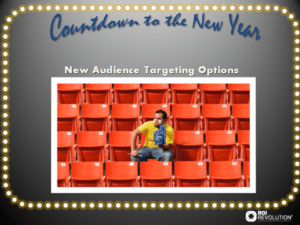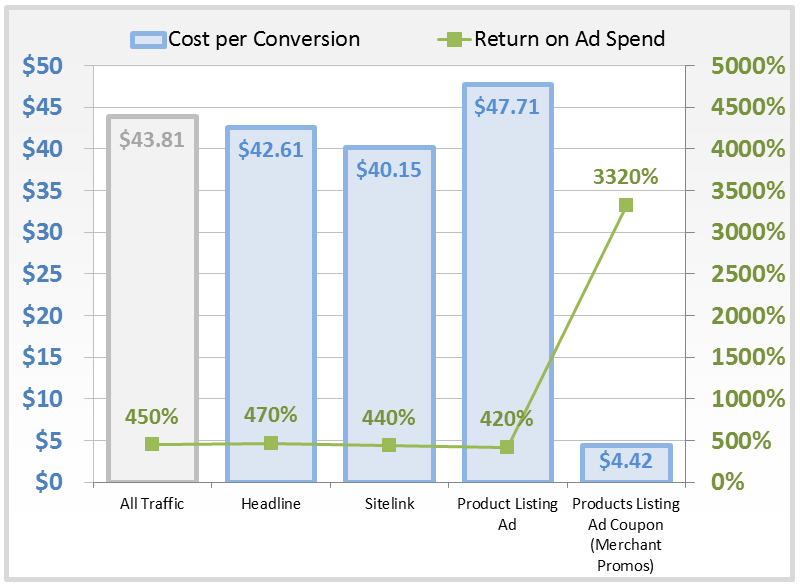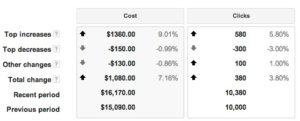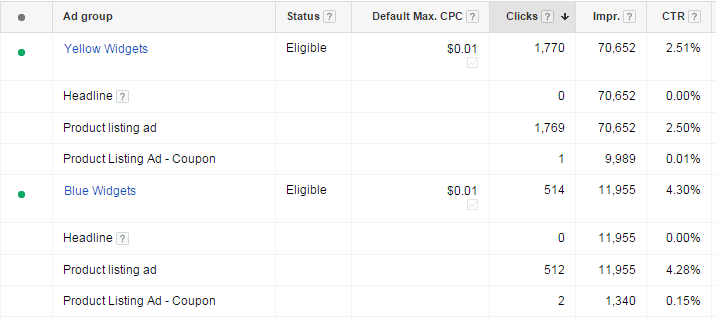 If you’ve ever done a product search on Google – chances are you’ve come across Google’s Merchant Promotions feature.
If you’ve ever done a product search on Google – chances are you’ve come across Google’s Merchant Promotions feature.
You’ve probably even used it yourself as a shopper. But what you might not know as an ecommerce manager is this—even though Google released this feature in late 2012, the vast majority of retailers still aren’t using it.
In fact, my guess is that only 1/3 of the accounts we’ve audited have ever used Merchant Promos.
This means there’s a big opportunity for you to jump on board and take the competitive advantage with this conversion-boosting ad extension.
But you might be wondering, what exactly does Merchant Promotions do, and why should you care? I’m glad you asked.
To the consumer, Merchant Promotions appear as extensions on Google Shopping ads. A product listing with a Merchant Promotion will appear with the “Special Offer” text beneath it. Clicking on this text will show shoppers the offer details and give them the option to shop now.

Why is This Ad Extension So Great?
A lot can be said about the benefits of product listing ads in general, but that’s beyond the scope of this post. The key benefits of Merchant Promotions are:
- The icon and link differentiate the ad, making your ad stand out among your competitors.
- Shoppers are always looking for a deal. They see “special offer,” and they’re immediately interested. This extension plays to the innate comparison-shopping nature of search traffic.
- This extension clearly states the promotional details before your website is visited. This pre-qualifies your traffic before you ever pay a dime.
- Merchant Promotions also give you the ability to schedule promotional dates in advance, which is a huge advantage for most retailers.
Let the Numbers Speak for Themselves…
Consider one retailer (a client who prefers we not publish their name), who saw this rise in conversion rate while at the same time experiencing a sharp decrease in CPA after launching Merchant Promotions in their account. Bear in mind this was only a 15% sale!
I show you this because I don’t want you to be one of the many retailers missing out on this golden opportunity in Google Shopping.
Another way to look at the data is this: since sales normally drive up performance everywhere in a paid search account, we looked deeper into the numbers by comparing the performance of different click types during the promotional run. Here’s what we found:

If that doesn’t convince you to sit up and pay attention to Merchant Promotions, I don’t know what will. And since you’re hopefully eager to learn more about Merchant Promotions now, here’s what you need to know to get started making the most of Merchant Promos.
Navigating the Setup Process
In recent years, Google has made Merchant Promos easier and easier to use. However, you do still need to get your account whitelisted in order to have access to this extension.
Whitelist Your Account
Whitelisting is easy to do, but is still one of those things you just have to do. Start by filling out the Merchant Promotions Interest Form (you’ll need access to your Merchant Center Account ID for this). Once you submit this, you can expect Google to get back to you in 1-2 weeks with an approval.
Build Promotions
Once you’ve been whitelisted for Merchant Promotions, you’ll see a link called “Promotions” appear on the left hand side of your Merchant Center. Clicking this will bring you to the page where you can easily build out your promotions.
Promo ID is the name that will identify this promotion as unique from any other. This can be as generic or specific as you want – just so long as it is internally consistent and memorable to your team.
Target Country & Language. If you sell internationally and want one sale to reach people in multiple countries and languages, you will need to build out separate promotions and campaigns for each of these.
Title is what will appear when a user clicks on the “Special Offer” link to investigate your sale. You only have 60 characters so make sure this is as effective and to-the-point as possible.
Redemption Code. Use this if your promotion requires a redemption code at checkout (versus a site-wide or product-specific discount that is automatically applied at checkout). Checking this box will prompt you to enter the redemption code. Double-check this before saving to make absolutely certain the information matches the actual sale code identically. Otherwise, your extension will be disapproved.
Product Applicability is the important place where you tell Google whether or not this sale applies sitewide, or only to specific products. If you’re only offering discounts on specific products, you will need to go through an extra step involving your product feed. We’ll detail this a bit later.
Effective Date Range. Last but certainly not least, you need to specify the exact start and end dates for your promotion. You can set this as far in advance as you feel comfortable.
WARNING: if the start date and time are not identical to the start date/time for the sale on your site, you will run into problems when Google’s robots go to check your site for the sale and it’s not live yet.
Once you’ve walked through these steps, we strongly recommend checking and double-checking your info to make sure everything is accurate.
Specific vs. Sitewide Sales
When setting up your promotion, you have to tell Google whether this is a sitewide sale, or only applicable to certain products. This is the difference between, say, a sale that offers a 20% off coupon code and a sale that offers 20% off all boots.
If your promotion is the latter, you’ll need to take the extra step of adding a new column into your product feed, labeled “promotion_id.” You will then need to add the promotion id that you specified earlier to all products that will be on sale. Google gives more details on that process on their support site.
Tracking Merchant Promotion Performance
Like most ad extensions, there’s not much you can do to see specific performance data, nor can you really “optimize” the same way you can with other features. For judging Merchant Promo performance, we suggest that you keep track of the product groups, campaigns, or period of time during which you run Merchant Promotions, then compare to other ad data. This will give you a “big picture” view of how the Merchant Promotions extension is affecting your account.
To see data on an ad-by-ad basis, however, there is one thing you can do.
Segment By Click-Type
To find this data, go into one of your Shopping campaigns, then click Segment –> Click Type.

This will give you access to data that looks like this:
You’ll notice the clicks on “Product Listing Ad – Coupon” are very low. Unfortunately, this is common not because the coupons are unpopular, but because this data will only populate specifically when the “SHOP” button is clicked, which happens less than you might expect. However, this data can still be valuable, when viewed in light of the bigger picture.
Making the Most of Merchant Promotions
There are two more need-to-know tips you’ll need to get the best results with Merchant Promotions in your account.
The Approval Process
One part of the puzzle is Google’s approval process for Merchant Promos—which can only start once your ad has already gone live.
This makes a little more sense when you consider that Google is concerned with keeping its search quality high and its searcher approval rating even higher. The last thing they want is for advertisers to offer shoppers a deal that’s not actually live.
Once your promotion activates (based on the start day and time you set in Merchant Center), it will not immediately become available. What it will do is trigger Google to start the approval process of your promotion. This generally takes one to two hours, after which point your approved promos should start showing.
Now, you might be thinking “2 hours? I need these to show right away! Hmm, maybe I could set the Merchant Promotion to start 2 hours before the site promo goes live…”
Don’t. It’s very important that you set everything on your ecommerce site to go live before your Merchant Promotions ping Google for approval. If Google does not find that your site matches your Shopping promotion, it will disapprove your ad.
This can be especially detrimental if you target shoppers across different timezones and don’t catch the disapproval until precious ad hours have been lost. So be sure to check and double check the settings in both your Merchant Center and in the backend of your ecommerce site.
Setting Your Promotional Calendar
Automation can never fully replace skillful human management and analysis when it comes to paid search. However, when it comes to Merchant Promotions, automation is one of your best friends.
One of the benefits of Merchant Promos is that it allows you to create your promotional campaigns days, weeks, even months ahead of time. This enables you to set aside a few hours one day to load in all your major promotions well before they start.
We have found this to be especially useful around Black Friday weekend and the holiday shopping season, when shoppers are shopping all times of the day and night. There’s a big difference between reaching your Black Friday audience with an offer at midnight vs. eight in the morning.
Be sure that any changes to your promotional calendar—be they promo codes, start and end dates, or sitewide vs. product sales—are reflected in Merchant Center well before the promo is scheduled to go live, to avoid a headache.
You’ll also want to set a reminder for yourself (or your analyst) to check once the sale goes live that everything is working properly. “Setting and forgetting” is never a good idea in AdWords.
Take Action
Merchant Promotions really doesn’t take too much effort to set up, and the results are very rewarding more often than not. But, as with most things in paid search, if you want the competitive advantage, you need to set aside the time and just do it.
So that’s what I challenge you to do right now. Go fill out the interest form, then make a calendar appointment for yourself to start setting up Merchant Promotions in 2 weeks. You won’t regret it.
Speaking of taking action now and not waiting until your competitors have grabbed all the low hanging fruit—we’ve written an entire guide on how you can start thinking like an early adopter to make the most of ROI-boosting features like Merchant Promotions.




